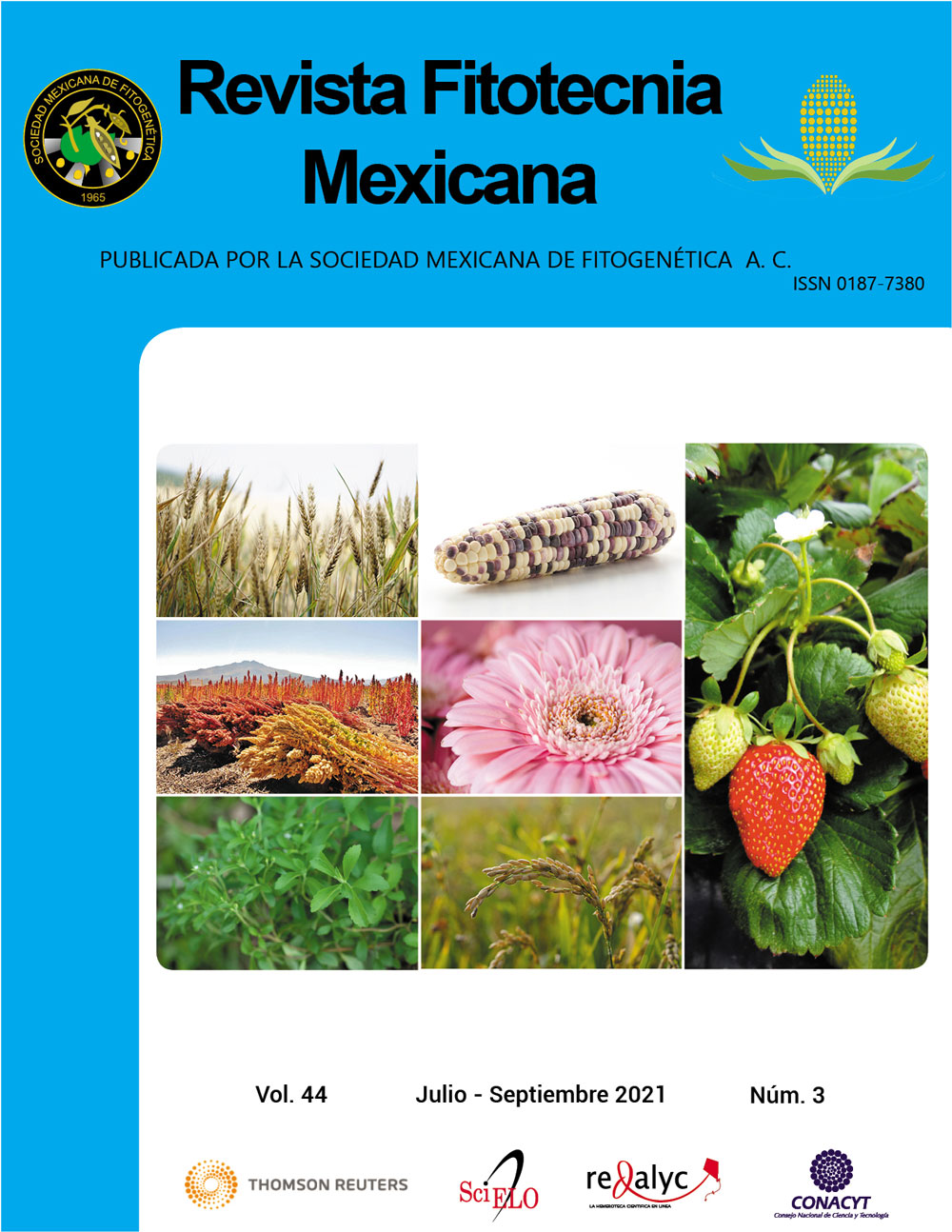MORPHOLOGICAL VARIATION OF GERBERA F1 HYBRIDS
Main Article Content
Abstract
The main method for breeding gerbera (Gerbera hybrida) is hybridization and subsequent selection. In Mexico, all commercial varieties are imported, which makes their production expensive. The aim of this research was to analyze the morphological variation of 24 gerbera hybrids previously obtained through intraspecific crosses between six commercial cultivars and to identify the promising variants. The hybrids were established in a greenhouse under a completely randomized design. They were evaluated at full bloom using 44 descriptors as proposed by the International Union for the Protection of New Varieties of Plants (UPOV). Analyses of variance and multivariate cluster, principal component and discriminant analyses were applied. The hybrids showed 65 % of the categories that cover the total variation of the descriptors used, with highly significant differences (P ≤ 0.01) in quantitative variables and indexes of 0.6 average between extreme values (lower/higher); the diameter of the flower head positively and significantly correlated with leaf width (r = 0.54, P ≤ 0.01) and with peduncle length (r = 0.47, P ≤ 0.05). Twenty-three shades were observed in the inner color of the outer ligule as well as the three types of flower head (single, semi-double and double). In a phenogram with an average identity coefficient of 0.712, the hybrids were separated into five groups with distances ranging from 0.3 to 0.66. The first three principal components explained 66 % of the total variance, and
the variables with the highest contribution corresponded to the flower head. The discriminant analysis grouped the hybrids mainly by the variables leaf length and width, peduncle length and flower head diameter. Hybrids with commercial potential for cut and pot flower, amenable to propagate by in vitro cloning were identified.

